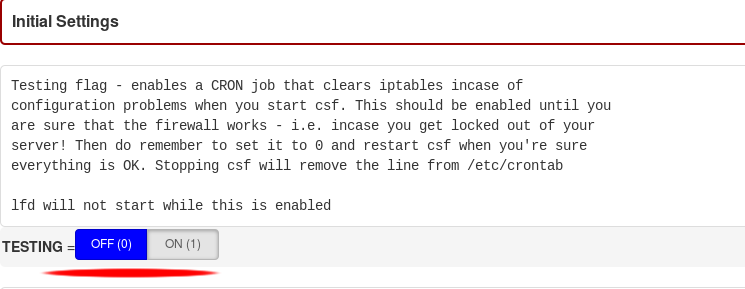frame
Howdy, Stranger!
It looks like you're new here. If you want to get involved, click one of these buttons!
Sign In RegisterHowdy, Stranger!
It looks like you're new here. If you want to get involved, click one of these buttons!
Quick Links
Categories
- 1.4K All Categories
- 7.3K General
- 6.2K General Discussions
- 412 Feature Request/Bug Report
- 545 Sales Questions and Answers
- 54 Time4VPS Life
- 242 Help requests
- 244 Server management
- 390 Tutorials
- 68 Various Tutorials
- 71 Web hosting control panels
- 133 Performance and Security
- 29 Web Applications
- 64 Linux Applications
- 25 Windows VPS
[CSF] ConfigServer Security & Firewall installation on DirectAdmin
 Valentine
Member
Valentine
Member

ConfigServer Security & Firewall (CSF) is a suite of scripts provides:
- A straight-forward SPI iptables firewall script;
- A daemon process that checks for Login Authentication;
- A Control Panel configuration interface;
- ... and much more!
0. Preliminary requirements:
- "CentOS 7 + DirectAdmin" template installed on server;
- Fully updates server software (yum update).
1. CSF installation
Installation of CSF is quite straightforward because it preconfigured to work with DirectAdmin:
cd /usr/src
wget https://download.configserver.com/csf.tgz
tar -xzf csf.tgz
cd csf
sh install.sh2. CSF configuration
After installation CSF starts in testing mode and there are a couple of things to take care of. First of all, you have to log in to your DirectAdmin. By default, the address is:
http://your-server-ip:2222
After successfully login you should select "ConfigServer Firewall&Security":

You should now see that there are two notices that we need to take care of. So select "ConfigServer Firewall" and then select "Firewall Configuration":

First, we will turn off testing mode:

And then we should restrict syslog/rsyslog access:

After these changes press the button "Change" at the bottom of the page and "Restart csf+lfd" afterward.
That is it, now you have a fully working ConfigServer firewall. For more information regarding CSF please visit their Read me page.
Tagged:



Comments
Installing ConfigServer Security & Firewall (CSF) on DirectAdmin is a prudent move to bolster server security. CSF provides a robust defense mechanism against threats, offering features like IP blocking and connection tracking. Its integration with DirectAdmin streamlines management, ensuring a comprehensive and user-friendly approach to safeguarding your server environment.
thank you so much good informetion